All issues

Successor
Volume 41, Issue 11
Displaying 1-4 of 4 articles from this issue
- |<
- <
- 1
- >
- >|
-
Hiroyuki SUZUKI1968 Volume 41 Issue 11 Pages 407-411
Published: February 20, 1968
Released on J-STAGE: November 25, 2011
JOURNAL FREE ACCESSBy means of indirect immunofluorescence method, the antibody against Rickettsia orientalis was, investigated on the sera of five patients with tsutsugamushi disease, who had been infected at the vicinity of the river bank of Shinano river and Agano river, Niigata prefecture, within the year 1966. Used as antigen was the peritoneal smear obtained from mice infected with Gilliam, Karp, and Kato strains of R. orientalis, respectively.
The results were as follows:
As a whole, the patients' sera obtained in the acute stage of illness showed 10-80X positive rate, whereas, the rate in their convalescence was 160-2560X against three types of antigen, Gilliam, Karp, and Kato strains.
Among the sera, especially the convalescent sera, differences of considerable magnitude in the positive rate according to the type of antigen used were observed.
These results led the author to the conclusion that this method has shown outstanding trustworthiness in the specific serological diagnosis of tsutsugamushi disease, and furthermore, by this method its typing is possible to some extent. In the auther's cases, 3 out of 5 patients were presumed to be infected with Gilliam type strains, one, Karp type, and one, Kato type.View full abstractDownload PDF (678K) -
1. Possessing Rate of Neutralizing Antibody in Inhabitants of Kumamoto CityMisao OHTAWARA, Tokichi ROKUTANDA, Shozo TANOUE1968 Volume 41 Issue 11 Pages 412-416
Published: February 20, 1968
Released on J-STAGE: November 25, 2011
JOURNAL FREE ACCESSAs the first report of this series attempted to unveil the hitherto little known status of rubella infection in Japan, the authors presented here the results of a sero-epidemiological survey performed on inhabitants of Kumamoto city.
In that, serum samples were collected non-selectively from a total of 410 persons who visited the affiliated hospital of the Faculty of Medicine, Kumamoto University for whatever kind of laboratory tests between Jan. and Aug. in 1965. These sera were subjected to detections of neutralizing antibody to rubella virus.
The results were summed up as follows:
1. Possessing rate of the positive neutralizing antibody by age distribution: An appreciable rise of the rate started at 10 years of age, and reached a peak (about 60% at the highest) between 15 to 19. This figure is considerably lower* than reported statistics of large cities such as Osaka and New York.
Moreover, the rate was extremely low in such age brackets as 0-4 and 5-9. This suggests that there has been no epidemic of appreciable size in this city in the past ten years.
2. The antibody possessing rate by sex: In any age group, differences of worth mentioning by sex were not observed.View full abstractDownload PDF (635K) -
II. Possessing Rate of Neutralizing Antibody to Rubella Virus in Inhabitants of Tokyo CityMisao OHTAWARA, Hiroshi SATO, Akira SHISHIDO1968 Volume 41 Issue 11 Pages 417-422
Published: February 20, 1968
Released on J-STAGE: November 25, 2011
JOURNAL FREE ACCESSAs the second report of this series, the authors presented the results of two surveys:(a) Between. March and August in 1966, a total of 170 persons among residents of Tokyo city were examined for possessing rate of positive neutralizing antibody to rubella virus mainly by age distribution and sex. (b) Incidentally, the authors had a chance to survey the antibody of school children of a junior high school in Tokyo city which reportedly had experienced in spring in that year, about one month previously to the survey, a rubella epidemic of limited size, involving, however, more or less almost whole classes of that school.
The both were summarized as follows:
1. In the survey (a), the possessing rate in age group of 0-4 was about 10%, began to increase at 5-9 years of age, and reached the maximum (almost 100%) at 20-24. This pattern is similar to reported. data about the antibody on inhabitants of large cities such as Osaka and New York. This suggests that rubella epidemics of considerable size have been attacking the city residents every year.
Any appreciable difference in the possessing rate by sex did not occur to any age group, as was the case in Kumamoto city.
2. In the survey (b), possessing rate of the antibody in such a school class as involving only a few manifesting patients remained at around 60% at the highest, the figure being close to the average of citydwellers tested in the survey (a) of corresponding age. On the other hand, in a class where a considerable proportion had manifested, the rate rose up to over 80%. These findings should be an implication. of the necessity of heavy contacts for the transmission of the infection.
Some discrepancy existed between the outcome of serological tests and questionaire data. This indicates a considerable portion of non-manifesting infections in this epidemic and confirms the necessity of neutralizing antibody tests for the final diagnosis of this disease.View full abstractDownload PDF (745K) -
1968 Volume 41 Issue 11 Pages 429-430
Published: February 20, 1968
Released on J-STAGE: November 25, 2011
JOURNAL FREE ACCESSDownload PDF (288K)
- |<
- <
- 1
- >
- >|